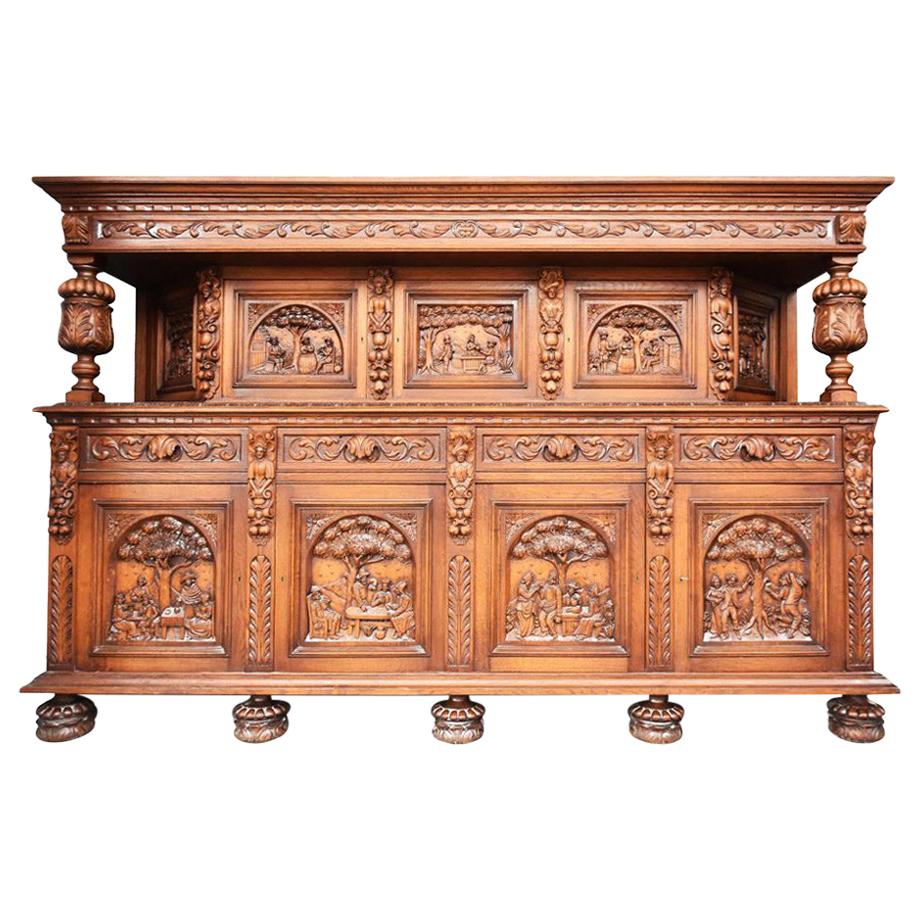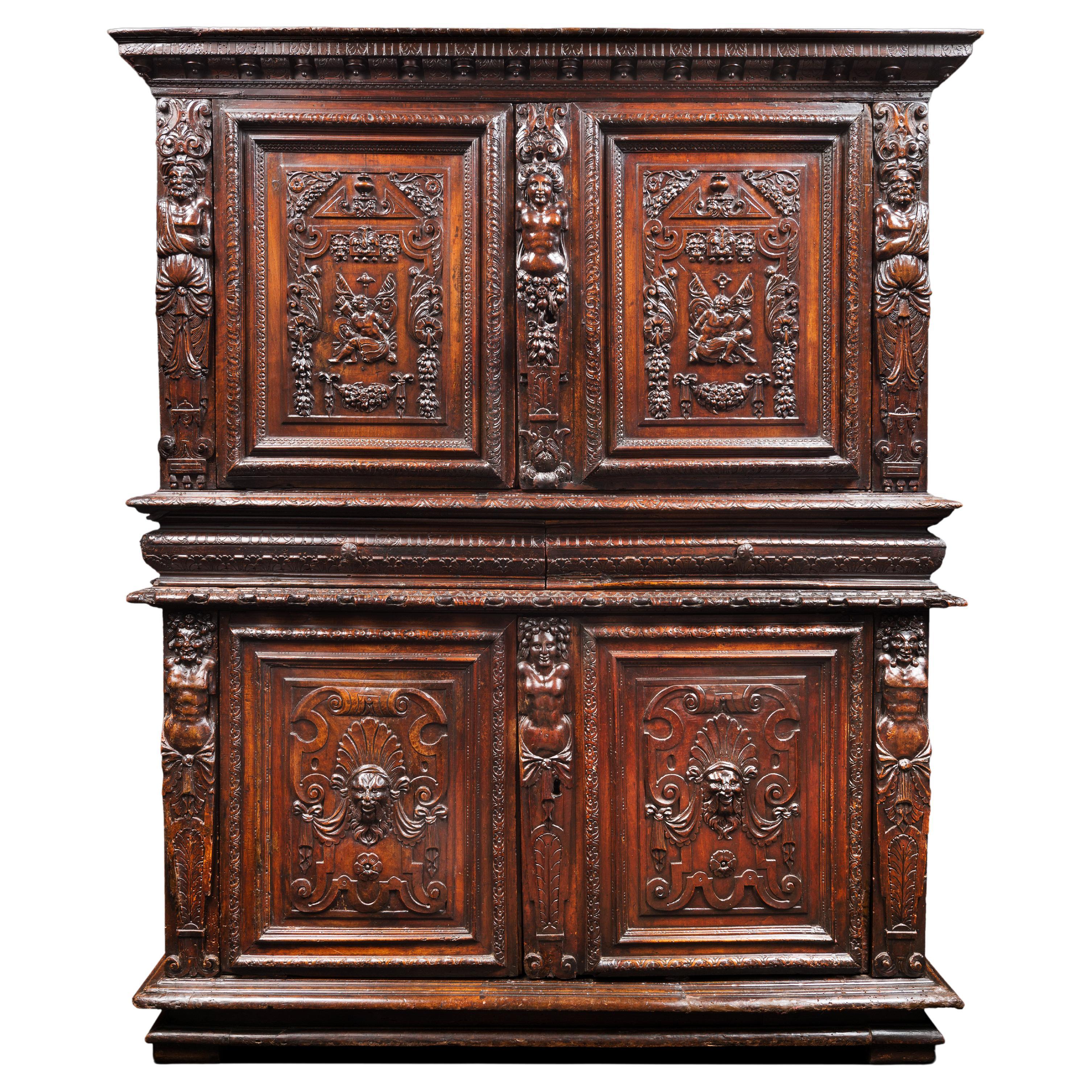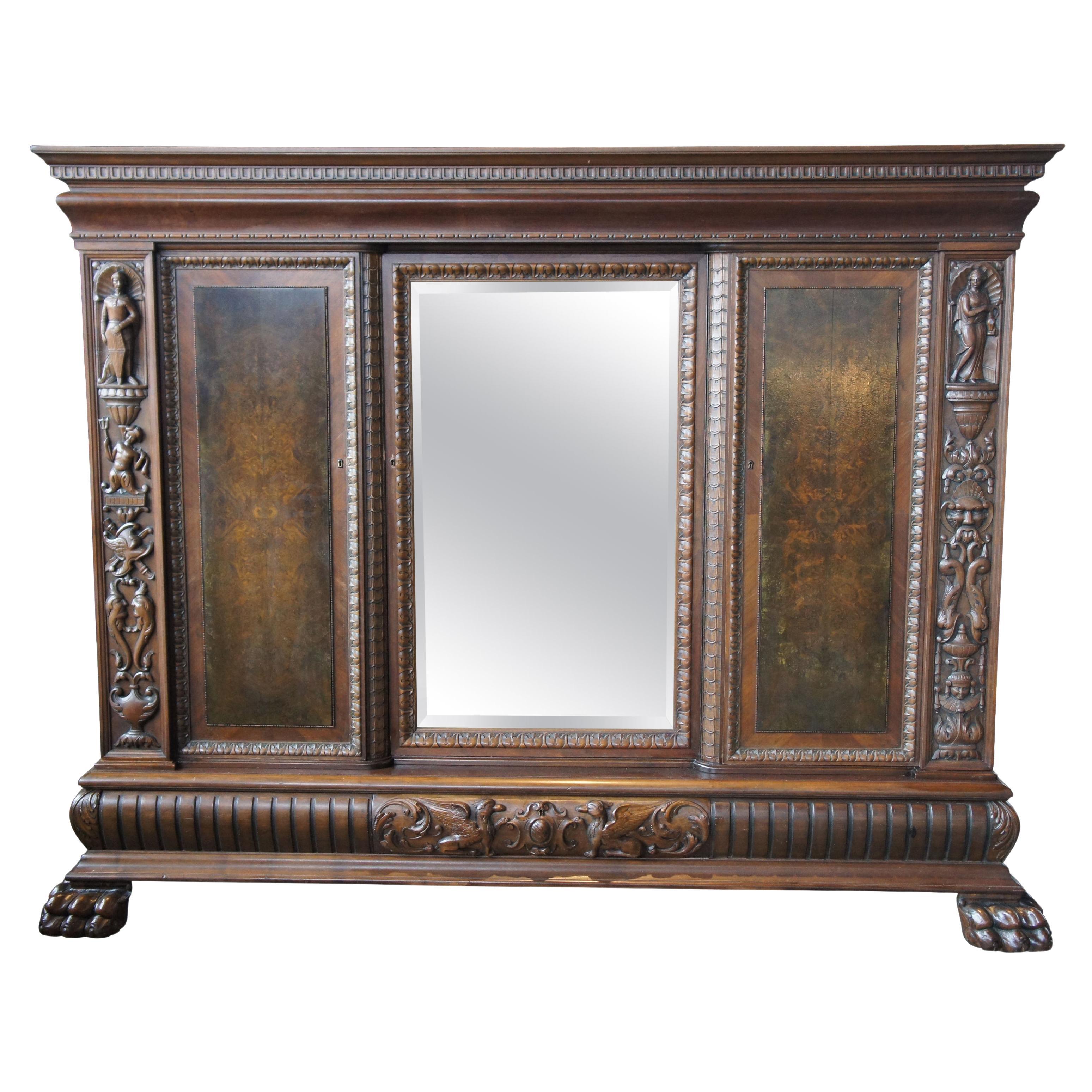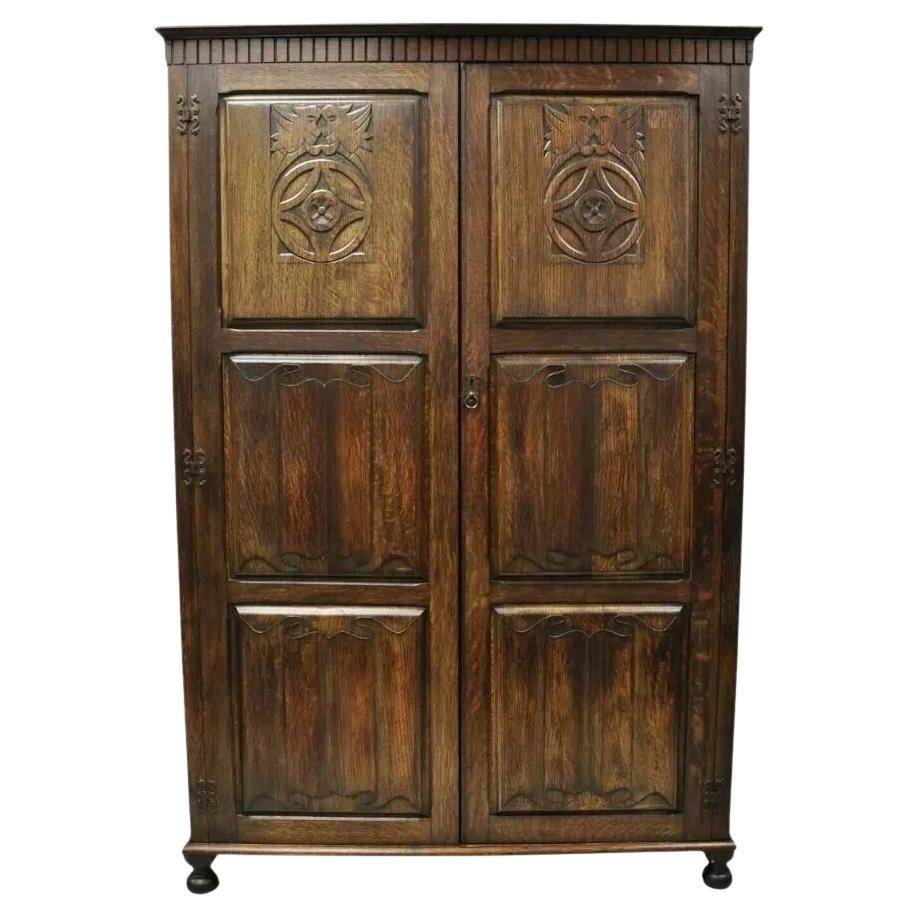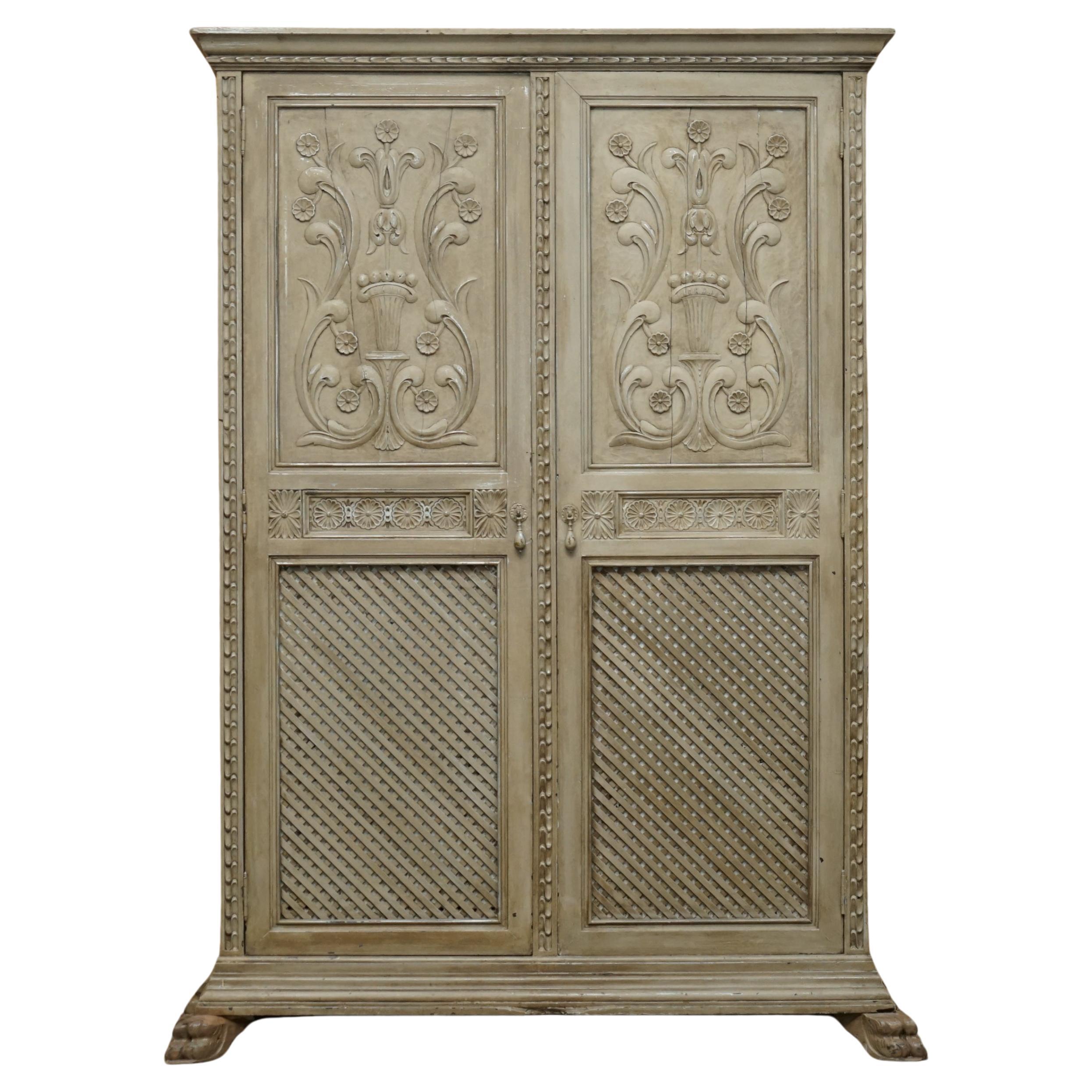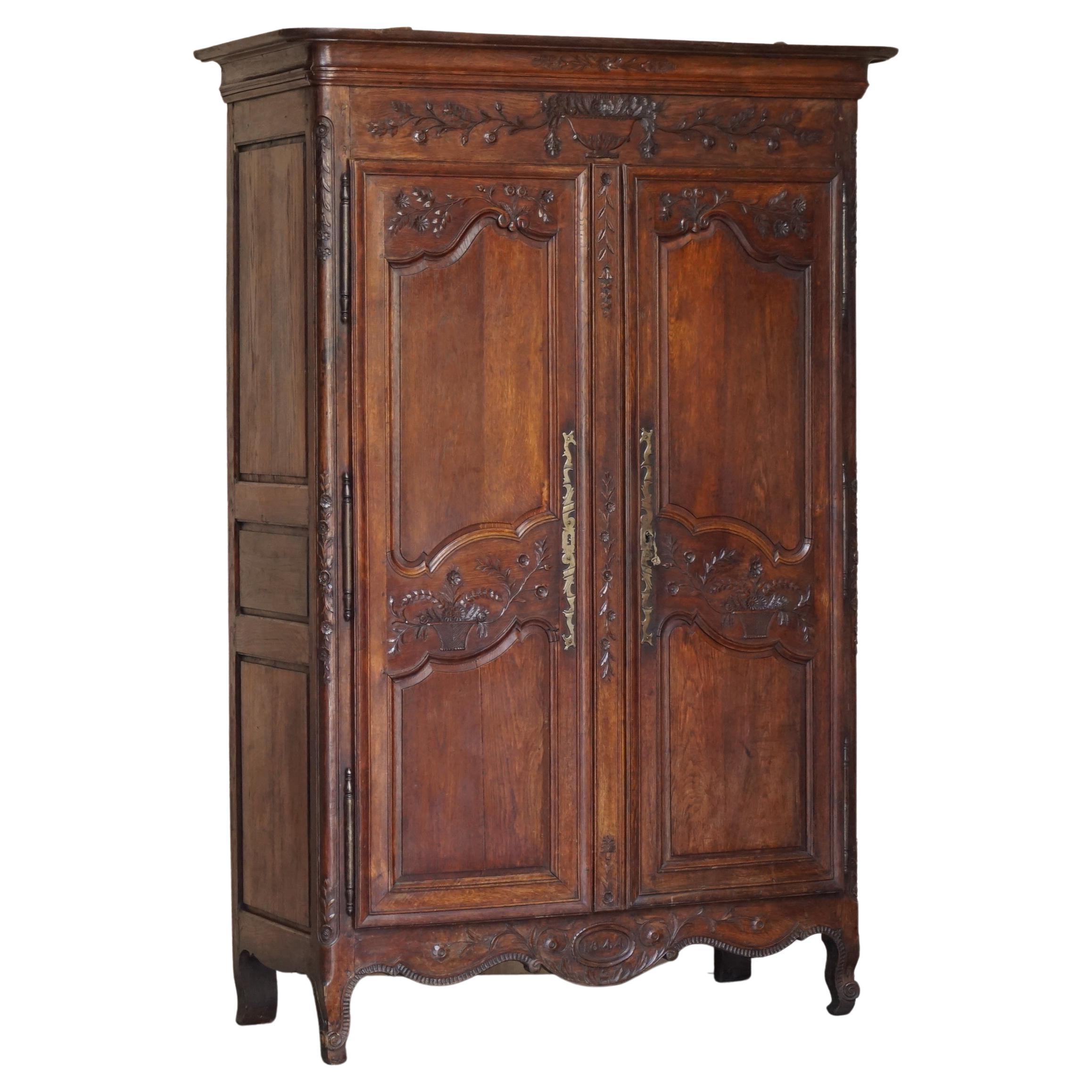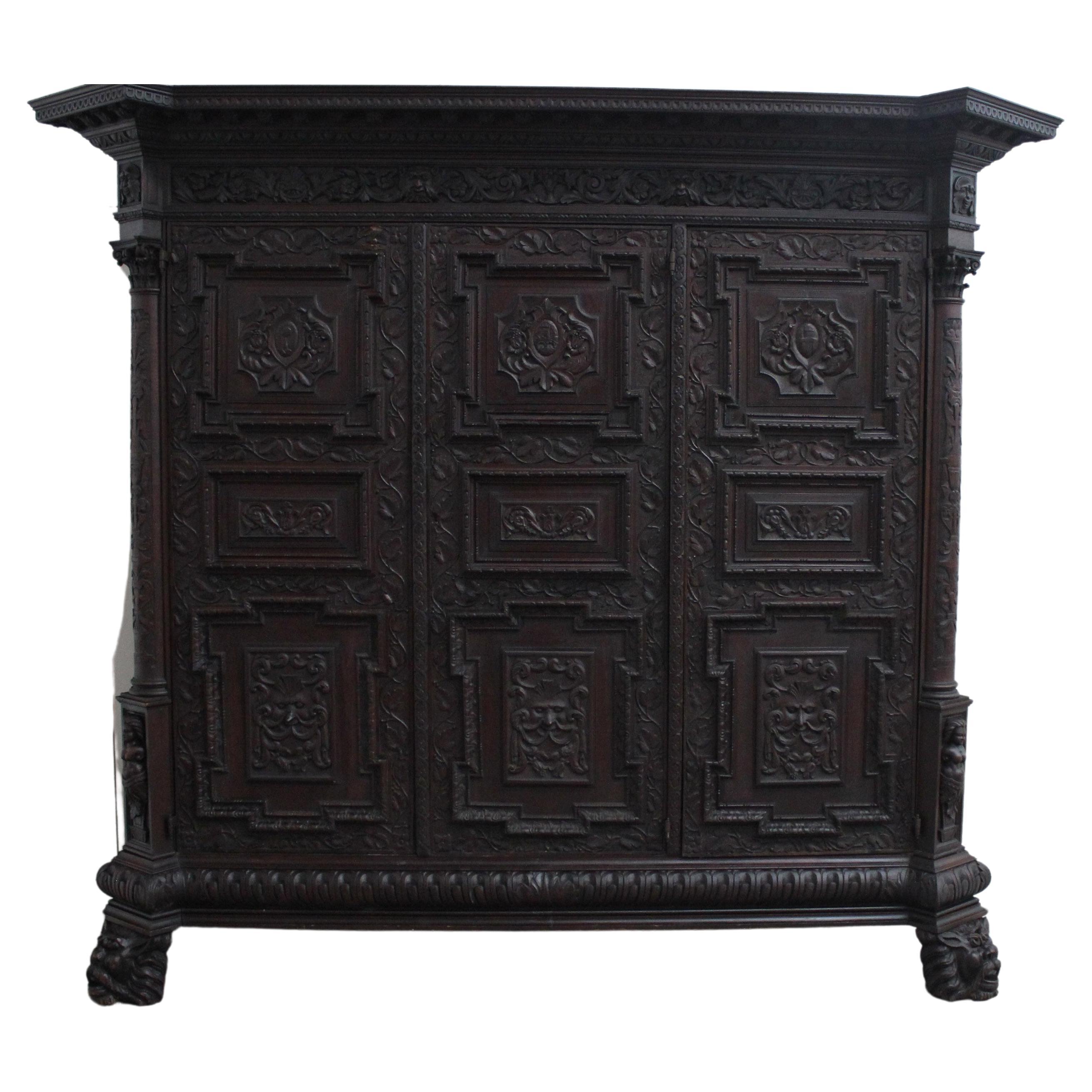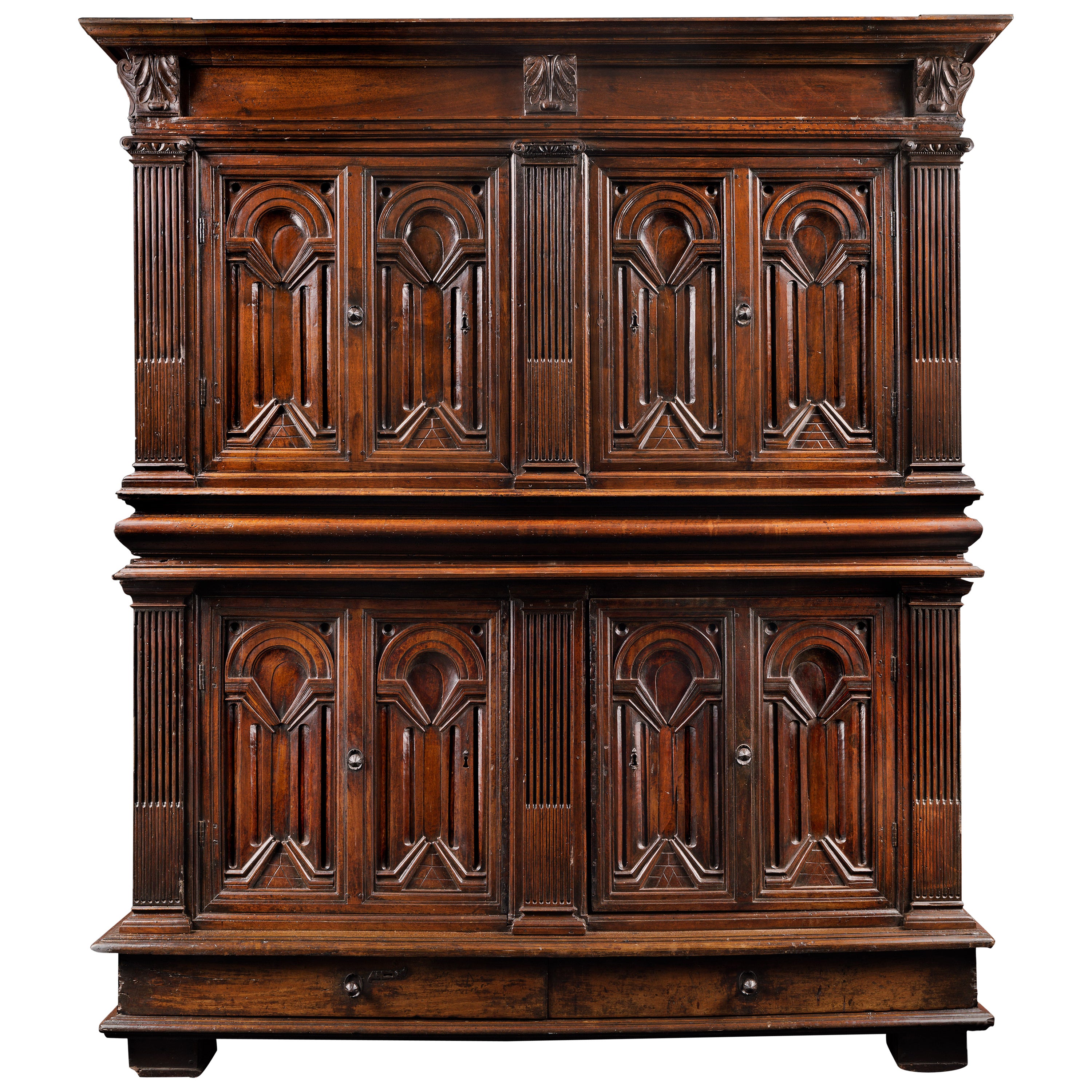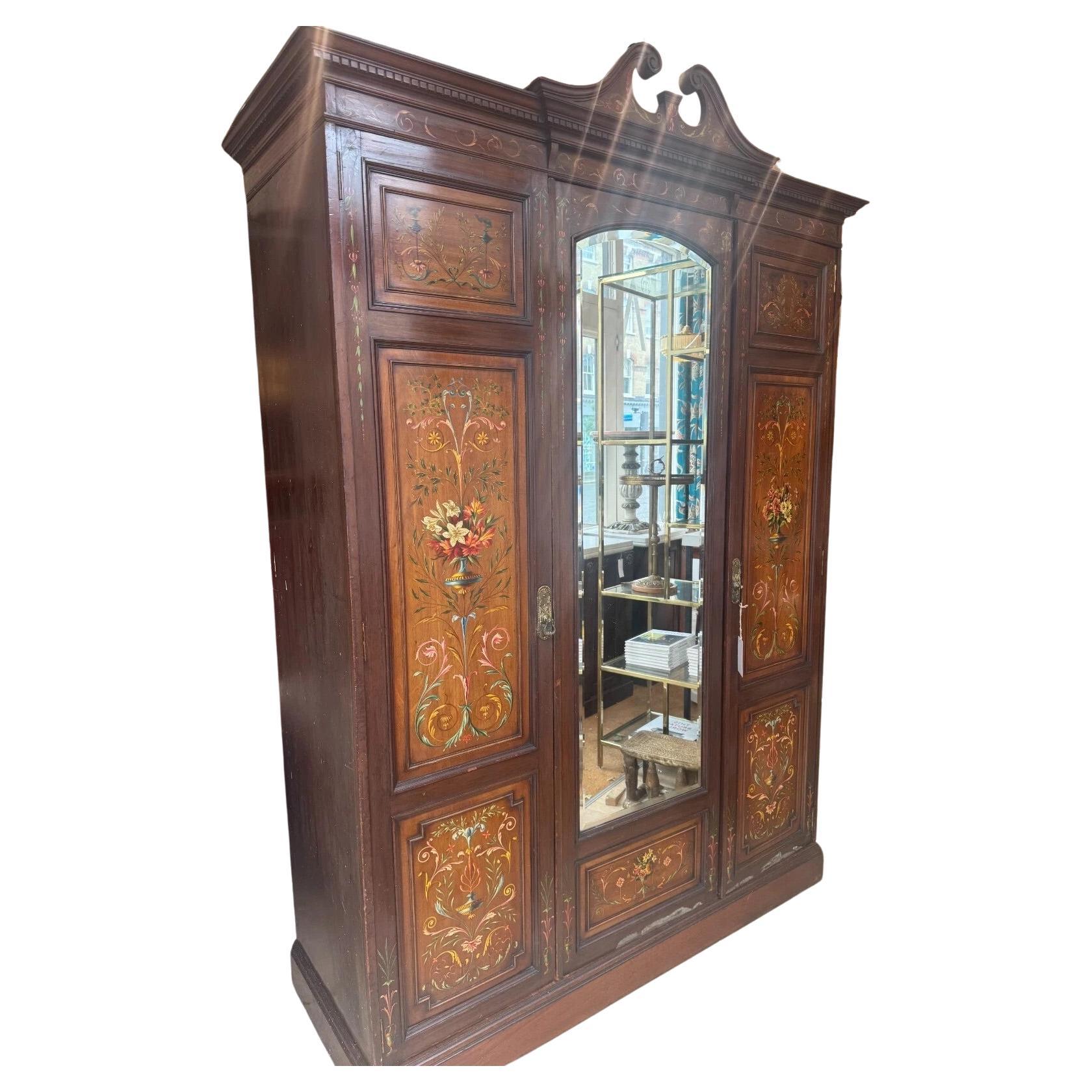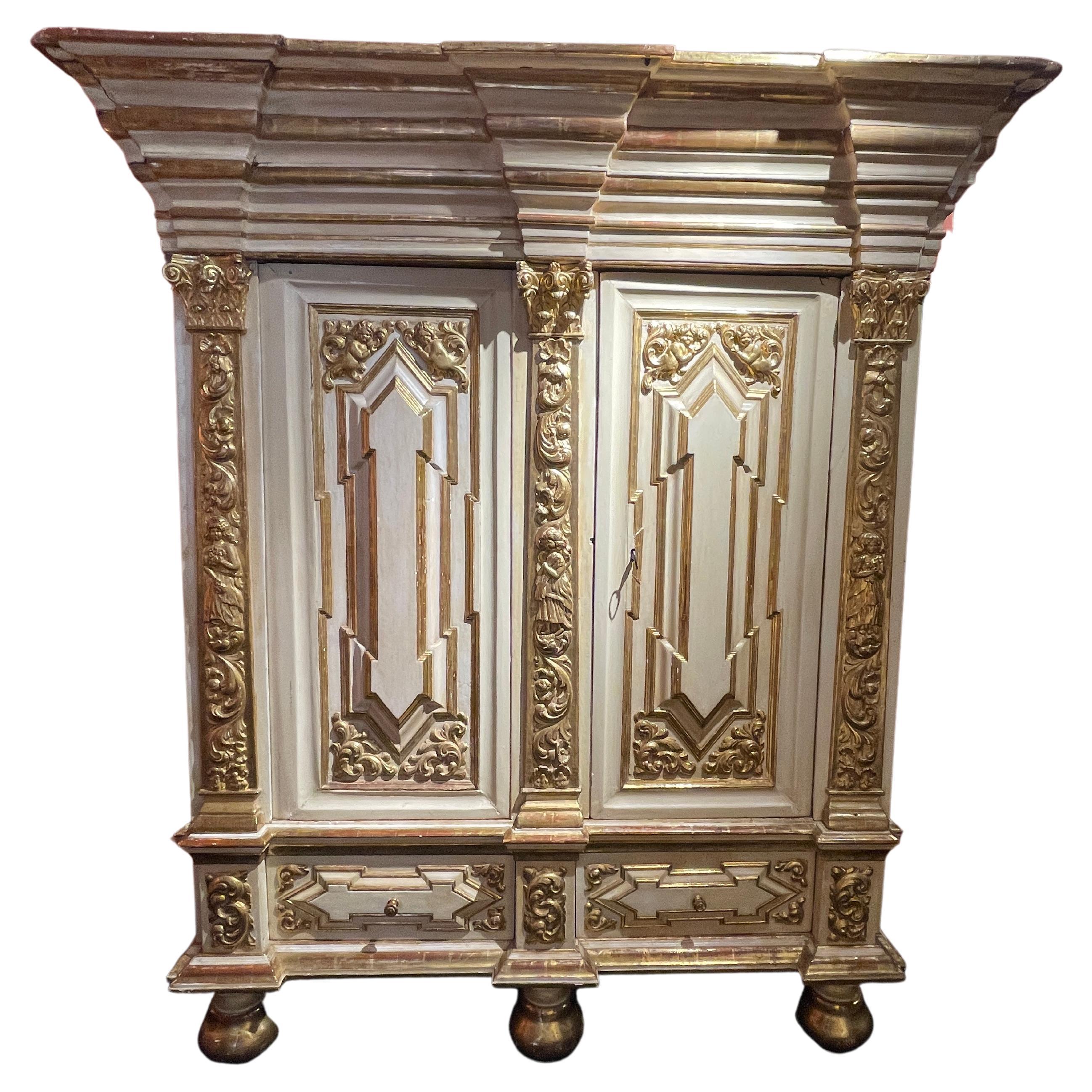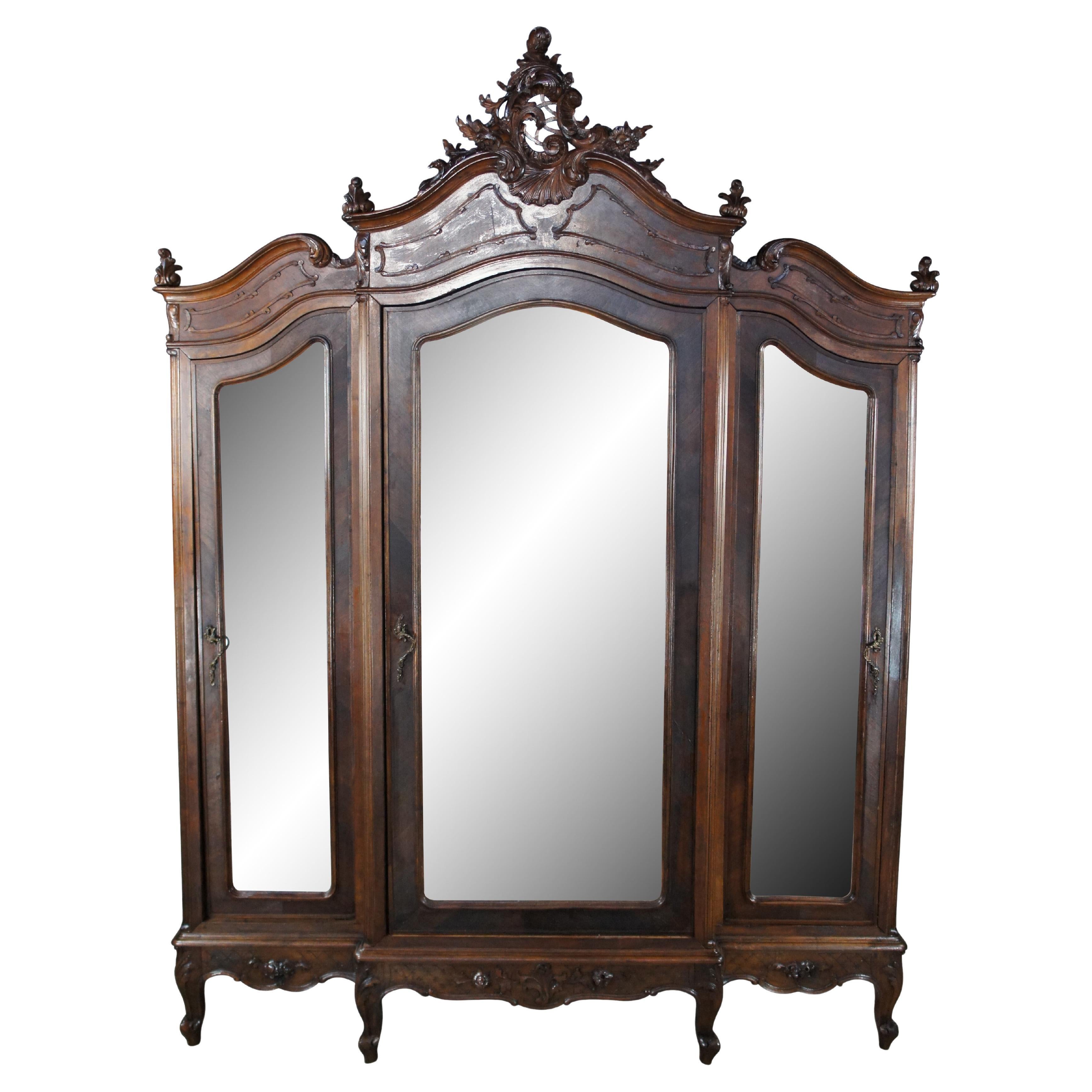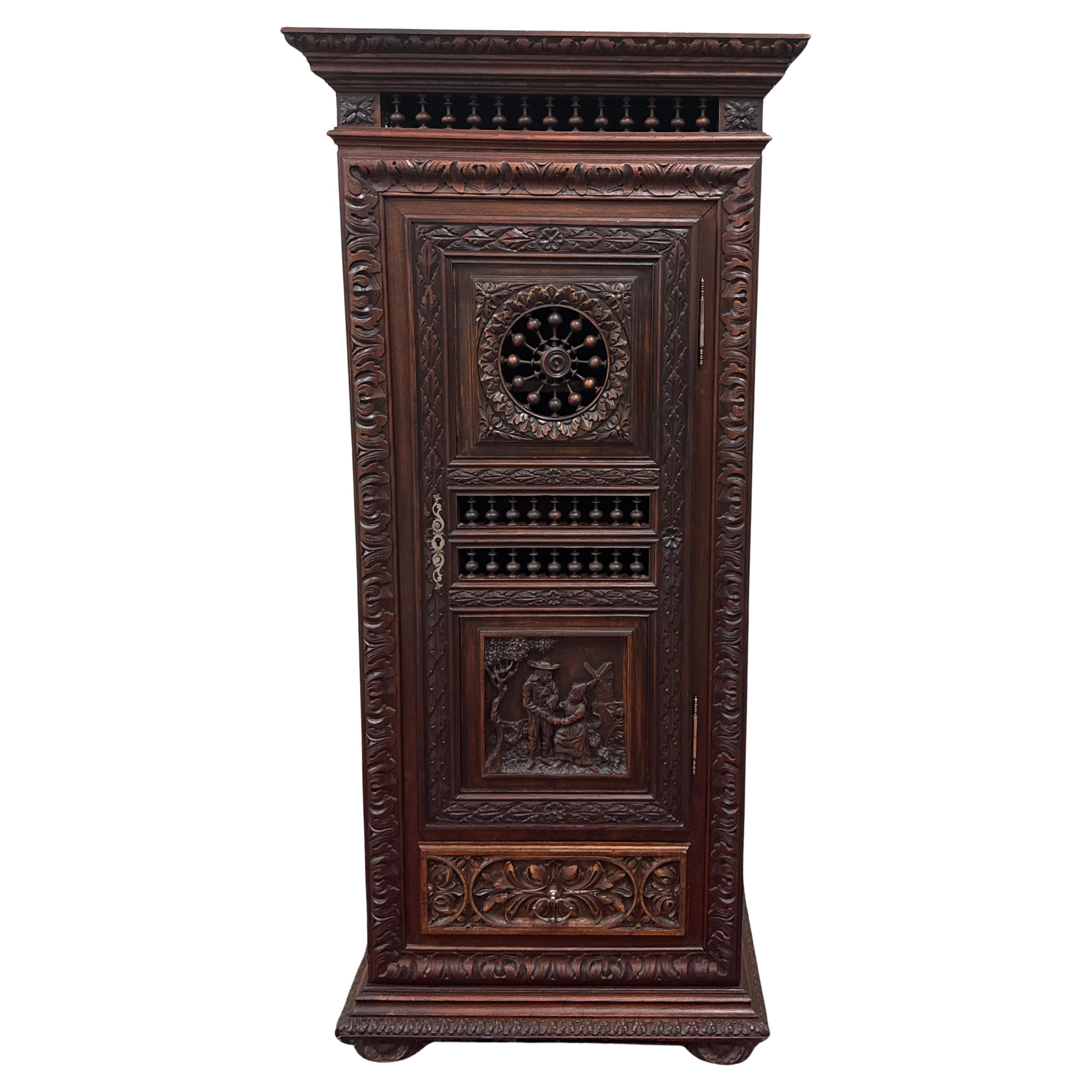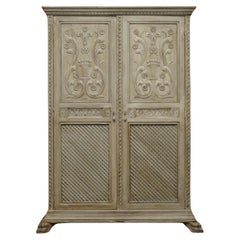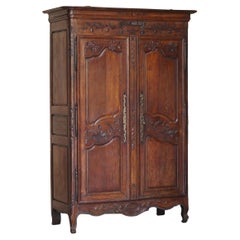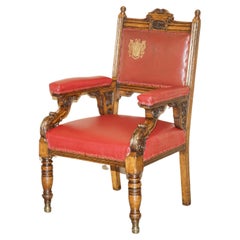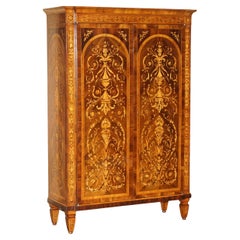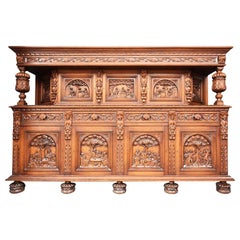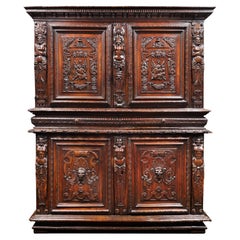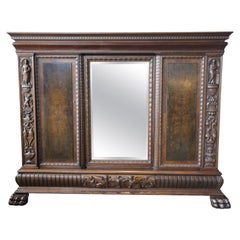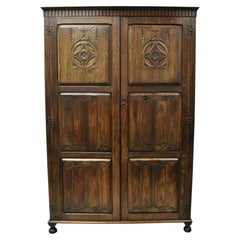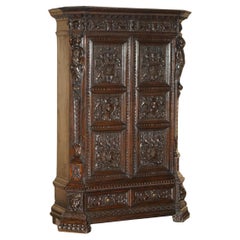
IMPORTANT CARVED NEO RENAiSSANCE ARMORIAL COAT OF ARMS ANTIQUE WARDROBE ARMOIRE
View Similar Items
Want more images or videos?
Request additional images or videos from the seller
1 of 21
IMPORTANT CARVED NEO RENAiSSANCE ARMORIAL COAT OF ARMS ANTIQUE WARDROBE ARMOIRE
$136,079.47List Price
About the Item
- Dimensions:Height: 84.65 in (215 cm)Width: 59.85 in (152 cm)Depth: 22.64 in (57.5 cm)
- Style:Renaissance (In the Style Of)
- Materials and Techniques:
- Place of Origin:
- Period:
- Date of Manufacture:1840
- Condition:Repaired. Refinished. Wear consistent with age and use.
- Seller Location:West Sussex, GB
- Reference Number:1stDibs: LU2823341025722
About the Seller
4.7
Platinum Seller
Premium sellers with a 4.7+ rating and 24-hour response times
Established in 2012
1stDibs seller since 2017
1,995 sales on 1stDibs
Authenticity Guarantee
In the unlikely event there’s an issue with an item’s authenticity, contact us within 1 year for a full refund. DetailsMoney-Back Guarantee
If your item is not as described, is damaged in transit, or does not arrive, contact us within 7 days for a full refund. Details24-Hour Cancellation
You have a 24-hour grace period in which to reconsider your purchase, with no questions asked.Vetted Professional Sellers
Our world-class sellers must adhere to strict standards for service and quality, maintaining the integrity of our listings.Price-Match Guarantee
If you find that a seller listed the same item for a lower price elsewhere, we’ll match it.Trusted Global Delivery
Our best-in-class carrier network provides specialized shipping options worldwide, including custom delivery.More From This Seller
View AllANTIQUE JACOBEAN REVIVAL HAND CARVED ARMOIRE WARDROBE WiTH GREY FRENCH PAINT
Located in West Sussex, Pulborough
Royal House Antiques
Royal House Antiques is delighted to offer for sale this stunning, original circa 1840-1860 Jacobean Revival hand painted French Armoire...
Category
Antique 1840s French Jacobean Wardrobes and Armoires
Materials
Wood
Antique 1844 Carved & Dated Large Wardrobe Armoire with Expertly Crafted Panels
Located in West Sussex, Pulborough
We are delighted to offer for sale this very grand, hand carved extremely large continental oak wardrobe dated to the base 1844
A truly stunning piece, this is a tour de force of ...
Category
Antique 1840s European Early Victorian Wardrobes and Armoires
Materials
Oak
$6,941 Sale Price
25% Off
Heavily Carved English Antique Victorian Armchair + Coat of Arms Armorial Crest
Located in West Sussex, Pulborough
We are delighted to offer for sale this lovely original Victorian heavily carved English Oak armchair with Royal coat of arms / armorial crest
This is a very decorative piece, it looks like a throne armchair but is of normal proportions as appose to throne chairs which are huge and wholly unusable in a modern context
The chair has ornate carving all over, just look at the very detailed pictured and you will see some...
Category
Antique 1880s English High Victorian Armchairs
Materials
Oak
STUNNING ViNTAGE ITALIAN MARQUETRY INLAID WARDROBE ARMOIRE OR HALL CUPBOARD
Located in West Sussex, Pulborough
Royal House Antiques
Royal House Antiques is delighted to offer for sale this absolutely exquisite, Museum quality, large Italian Marquetry inlaid Wardrobe, Armoire or Hall Cupboard...
Category
20th Century Italian Regency Wardrobes and Armoires
Materials
Hardwood, Oak, Satinwood, Walnut
Rare Moses Michelangelo Guggenheim & Pauly Cie Et Venice Antique Carved Armoire
By Guggenheim Museum, Pauly et Cie
Located in West Sussex, Pulborough
We are delighted to offer for sale this very rare one of a kind Pauly CIE Et stamped hand carved walnut armoire made by the genius that was Moses Michelangelo Guggenheim 1837-1910
Where to begin, this cabinet is stamped to the rear “Fabrique De Meubles Pauly & Cie Venise. Pauly & Cie” who were a world famous glass foundry and later equally famous furniture manufacturer. Their grotto furniture has an immense following across the world. This piece was most likely retailed through them as it was made by Moses Michelangelo Guggenheim who is a fellow venetian
There is one other known example of his works which is very similar, it is currently retailing for no less than £900,000 however it is accompanied by a few other pieces from a drawing room suite. The suite came from Palazzo Papadopoli, a Renaissance palace on the Grand Canal in Venice built for the Coccini family by Giovanni de Grigi around 1560. I will include some further history below on both Pauly CIE ET and Moses Michelangelo Guggenheium
On to the armoire, it is clearly the most ornate tour de force of carving you will ever see, I’m thankful it has managed to survive so long without being broken up by salvagers looking to reclaim the sculptures. You can see in the carving elements of Pauly’s inspiration in the form of shells. You also have Putti’s riding dolphins and so on. We have fully treated it as there were various signs of old worm, it’s then been cleaned waxed and polished. One of the hidden hinges has been replaced, otherwise it is in near perfect condition for the age. The insides houses three wood shelves
Dimensions
Height 255.5cm top to bottom, without the removable top carving 211cm
Width 170cm arm to arm of the chaps on the outside, 172cm at the top, 166cm at the bottom
Depth 63cm top, 55cm middle, 59cm bottom
Please note all measurements are taken at the widest point
Moses Michelangelo Guggenheim
Leading expert of decorative arts in late 19th century Venice, Michelangelo Guggenheim (1831-1910) also was one of the greatest antiquarians and a modern furniture producer in the “City of Water”. His collections stored in the Balbi Palace on the Grand Canal were an outstanding sight, that art amateurs would recommend.
At the age of 20, he founds a "Stabilimento d’arti decorative e industriali" which purpose is the industrial creation of objects bearing an artistic force. The furniture that made him worldwide famous re-imagines ancient styles, freeing their aesthetic powers to serve modern imagination. Often in walnut, his pieces of furniture sent to World Fairs impress people by the finesse of their sculptures.
A prized designer as well, he reorganizes princely interiors in the same spirit. His most famous work is the Palazzo Papadopoli's design about 1874, where he unfolds the vocabulary of several periods. He conceives there a richly furnished Neo-Renaissance Cabinet that relived the Italian golden age. For the exceptional result he is awarded the Gold Medal of merit for science and arts by Ludwig II of Bavaria.
Pauly & Cie Venise
Since its foundation (1866), Pauly & C. has stood for elegance, creativity and Venetian luxury. The ancient Roman technique known as “murrine”, which today is the symbol of Murano glass, was reproduced for the first time in its workshops and was presented to the world at the Universal Exhibition in Paris in 1878.
In 150 years of business Pauly & C. has produced unique works for royal palaces, public buildings, private villas and has served an international client base that includes some of the most prominent names from the world of culture and art, figures from the world of industry and finance, politicians and nobility.
Pauly & C. - C.V.M. (compagnia Venezia Murano) works are currently held in many private collections and exhibited in some of the most prestigious museums in the world.
In the last years of activity, Pauly has been active with three distinct brands: • Pauly & C. CVM, the time-honoured company that produces classic objects, recreating old designs and collections and offering modern reinterpretations of them. • Pauly Glass Factory, which continues its association with artists and designers to produce artistic works with modern lines. • MVM Interior operates throughout the world with architects, interior designers and design studios for the creation of prestigious personalized projects
History
Compagnia di Venezia e Murano C.V.M. began as Salviati &C. in London in 1866 under the direction of Vicenza attorney Antonio Salviati and with the backing of two British men: archaeologist Austen Henry Layard and antiquarian Sir William Drake.
The company was dedicated to using ancient techniques and utilized master glassblowers in its efforts to do so. It called in specialists from other fields like goldsmithing and engraving to ensure authenticity and employed artist Giuseppe Devers to teach the techniques of enamelling and heat-applied glass gilding to company artisans.
Archaeologist Layard was particularly interested in the mosaic glass techniques of Roman and pre-Roman artists, and he spent years personally overseeing the work of the company's technicians and glassblowers in attempting to revive those techniques. In 1872, the company was successful, managing to replicate the type of glass commonly known as "murrina". The company was renamed Venice and Murano Glass and Mosaic Company Limited in 1872, and, in 1877, Layard purchased Salviati's interest so that Salviati could pursue other interests.
The company quickly earned a reputation for quality original glass art and reproductions as well as its many mural mosaics in Great Britain and elsewhere in Europe. In 1878, the murrine produced by Compagnia di Venezia e Murano was included in its exhibit at the International Exhibition in Paris, which was the chief attraction in Italian glass. In its observations of the display, the United States Commission to the Paris exposition commented not only on "Roman murrine glass", but also particularly on the mural glass mosaics, the "perfection of which" had "engaged the earnest attention of the company." Mosaics produced by the company during the time period are still in existence in diverse areas such as Gonville and Caius...
Category
Antique 19th Century Italian Victorian Wardrobes and Armoires
Materials
Walnut
$205,673 Sale Price
40% Off
Eight Hand Carved Armorial Crest Coat of Arms Antique Jacobean Dining Chairs
Located in West Sussex, Pulborough
We are delighted to offer this lovely suite of eight original, early Victorian, hand carved Jacobean revival dining chairs with hand car...
Category
Antique 19th Century English Jacobean Dining Room Chairs
Materials
Leather, Oak
$12,247 Sale Price / set
25% Off
You May Also Like
Renaissance Style Wardrobe
Located in Marseille, FR
Exceptional richly carved Renaissance style wardrobe decorated with sketches with many characters depicting various rural scenes extraordinary size. ...
Category
20th Century French Renaissance Wardrobes and Armoires
Materials
Wood
$21,266
French Renaissance Armoire
Located in Saint-Ouen, FR
Original lock and key
This piece of furniture shows no recess on its upper part. It opens with four folding-doors and two drawers within the belt. The key bears the date 1524 above cross motifs.
Burgundy and Lyon regions subordinated themselves to architecture in a different manner than the other french schools. Rather than using particularly columns and pediments pieces of furniture from Lyon borrow architecture’s organization principles and rigorous designs.
On the upper body a strong feeling of balance and symmetry appears with the folding doors reliefs. Swags of flowers and fruits held with knot cloth centered by a man seating on his arms. Here profiles, masks and chou de Bourgogne mingle with the structuring scrolls. The two lateral terms wear draperies and the goddess Diana in the center wears a belt of fruits similar to Hugue Sambin’s designs (Termes de Diane et de Venus, 1554, BNF).
The two palm-leaves enriched drawers and the alternating scrolls belt balance the weight of the cornice with its alternatings consoles and tops.
The lower body is also adorned by three terms with a feminine one in the center, all three are wearing fruits on their heads. The folding doors are centered upon a motif of cut cuirs by a mask in high relief. Wearing a feathered tiara...
Category
Antique 16th Century French Renaissance Wardrobes and Armoires
Materials
Walnut
$94,516
Antique Renaissance Revival Walnut Carved Knockdown Bookcase Armoire
Located in Dayton, OH
Made from walnut with extensive carvings and matchbook veneered outer panels. There are three-door compartments and one lower dovetailed drawer. All four areas are lockable.
Each ou...
Category
Early 20th Century Victorian Wardrobes and Armoires
Materials
Walnut
$3,760 Sale Price
20% Off
Antique Belgium Renaissance Jacobean Figural Carved Oak Large Wardrobe Cabinet
Located in Philadelphia, PA
Antique Belgium Renaissance Jacobean Figural Carved Oak Large Wardrobe Cabinet. Item features figural carvings to door fronts, bun feet, mirror to interior door, 3-dimensional "drape...
Category
Early 20th Century Unknown Jacobean Wardrobes and Armoires
Materials
Oak
Neo Renaissance Style Walnut Armoire, France, End 18th Centrury
Located in Montelabbate, PU
Wardrobe with 3 doors, in renaissance style, enriched with carvings of considerable elaboration and difficulty of execution. Made in France at the end of the 18th century, beginning ...
Category
Antique 1890s French Wardrobes and Armoires
Materials
Poplar, Walnut
$8,270 Sale Price
53% Off
Renaissance Palace Wardrobe with Perspectival Views
Located in Saint-Ouen, FR
A rare carved walnut wardrobe opening with four door-leaves and two drawers in the lower part. The doors bear architectural views in low reliefs, fluted pilasters and Ionic capitals.
Upper Body
Two door-leaves with carved architectural perspectives open the wardrobe framed by three fluted pilasters with Ionic capitals.
Each door-leaf depict two semi-circular arcades whose cornice and base shows a central vanishing point. Likewise the pavement’s lines act for the artisan as a way to create depth. The vaulting instead leads us to think the vanishing point has to be situated where the handle is, between the two complementaries reliefs.
The elegant moulded belt hides an internal secret space, accessible through a moveable plank in the upper body.
Lower Body
Two door-leaves identical to those of the upper body framed by three fluted pilasters with Doric capitals. The base of the wardrobe opens with two large drawers.
The sides also bear panels depicting architectural perspectives. The external pilasters share their Ionic capital with the facade’s pilasters. Thus we can observe on the wardrobe’s sides the capital’s lateral parts with the elegant volute specific to the Ionic order.
This palace wardrobe is topped by an overlapping cornice standing on three consoles for the facade and two consoles on each sides. Placed right above the pilasters each console are adorned by fully expanded leaves.
During the 15th century a major interest for architecture and perspective studies arises and influences patrons tastes. The work of great theorists such as Leon Battista Alberti...
Category
Antique 16th Century Italian Renaissance Wardrobes and Armoires
Materials
Walnut
Recently Viewed
View AllMore Ways To Browse
Important Antiques
English Renaissance Furniture
Renaissance Paris
Italian Coat Of Arms
Coat Of Arms Carved
Cherub Panel
English Coat Of Arms
Carved Plaque French
Coat Of Arms Lions
Antique Italian Coat Of Arms
Renaissance Plaque
Carved Lion Bedroom
Antique Castle Doors
Coat Of Arms Panel
Carved Oak Italian Cabinet
English Armorial
Lion Dragon
Antique Chestnut Cabinet
